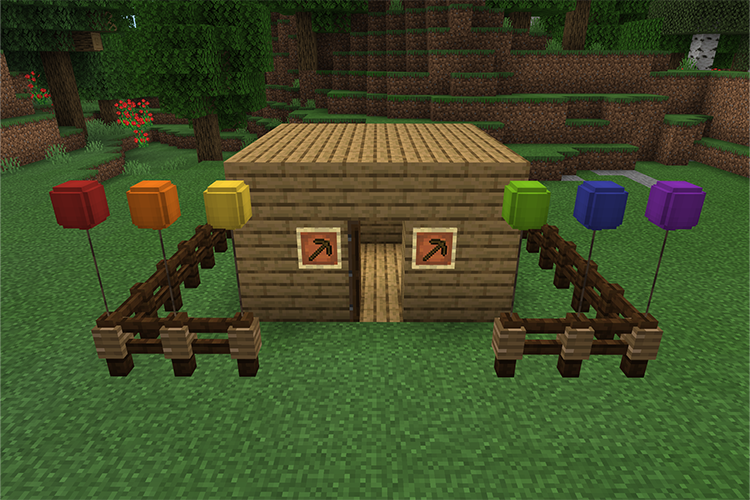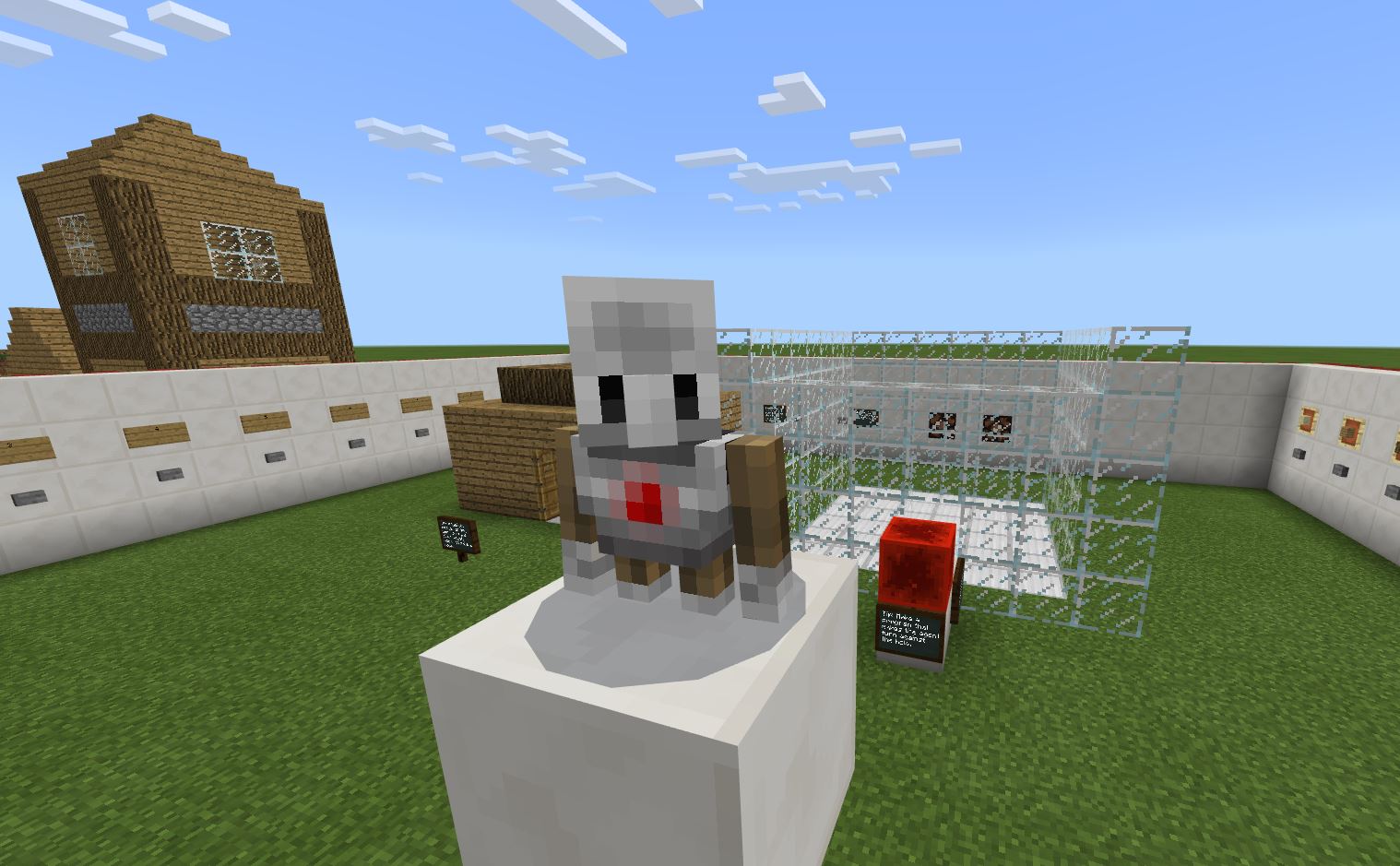Creation as an act of memory: Preserving a closing school in Minecraft
13 Jan 2022

13 Jan 2022

As a result of social and demographic changes, some schools in Japan will need to close. For students, that can be a difficult process. One teacher at Kaminikoro Elementary wanted to help her learners memorialize their school in virtual space by re-creating it and filling it with their memories, so she turned to Minecraft: Education Edition. Read Ms. Nojiri's story in this guest post.
Japan is in the midst of sweeping social changes. A declining birthrate and a growing proportion of elderly people mean that some school closures are inevitable. Kaminikoro Elementary School in the countryside of Hokkaido, the northern island of Japan, is no exception. Unfortunately, our school has been swallowed up by the waves of these social forces. It will close in 2022, ending a long history that has continued unbroken since 1921.
When I shared the news with my fifth and sixth graders, many said they didn't want to leave their favorite school. We couldn't stop it from closing, but we considered ways to preserve the school's memory. I consulted with them about what kind of project we could do to commemorate their time there. Over the course of our discussions, Minecraft emerged.
I decided that we would use Minecraft: Education Edition to re-create the school in a virtual world. If we could construct a digital version of Kaminikoro, students would be able to visit whenever they wanted, from wherever they were headed next. They could create representations of their thoughts and store memories of their time there. The actual school would be gone, but the project could help it remain in everyone's memory.
I had always taught in the orthodox Japanese style. Learners line up their desks and listen to the teacher, who stands in front of the blackboard and lectures. But that style doesn't bring out the students' full potential. I don't have any special skills or expertise with ICT equipment. But with Minecraft, I was able to enrich learning as my students took the initiative.
I'd never worked with Minecraft before this project. On the other hand, my students had plenty of experience with the game, so I wasn't so much a teacher as a facilitator. I learned alongside them and supported my class through their doubts and difficulties as we worked together to solve problems.

Some young people have Minecraft experience, and some don't. At the start of this project, there was a difference in how much each student could accomplish. But as they supported each other and the project progressed, each learner developed the ability to manage more tasks on their own, and everyone was able to accomplish their goals.
When students are engaged in Minecraft, they might give you the impression that they're working silently by themselves. But they're actually having fun chatting and learning within the platform. For example, one student was working on the simple task of making a wall, and she wanted to create a blackboard. So, she asked her peers, "How do I do this?" Immediately, other students shared the processes they'd developed for their own builds. Young people get excited about supporting their friends and showing off what they've learned.
I often saw students discussing which items would be right for their creations. In one instance, a learner wanted to represent a fluorescent lamp, so they turned to their peers. Another student suggested a lantern, but it didn't quite capture the look they wanted. After some back-and-forth iterations on the concept, they decided that the glow of a sea lantern was just right. Combined with a lever, it looked exactly like what they had envisioned! There are only a limited number of items in Minecraft, so learners rack their brains to create something as close as possible to the real thing. There's no one correct answer!
Students can cover many academic subjects when they're using the platform. For example, when my learners were first reconstructing the school building, they took a tape measure and headed off to size up its interiors. Then they utilized the ratios they'd learned in mathematics to decide on its virtual proportions. As they were working toward their final build, they would take pictures of the actual school building and engage their design skills to compare them to what they'd created. Then, when they had a near-finished version, they would re-examine the photos to check their work.
One student was getting tired of breaking down mountains. Then he discovered the Agent, the in-game character who executes coding commands in Minecraft: Education Edition. This learner has often struggled with his studies, but he asked his parents for a Minecraft guidebook to help him take on the task. It was a thick book with dense type, and until that moment, he had never tried reading at that level. Getting acquainted with the Agent was just the motivation he needed!
With his guidebook in hand, he repeatedly worked through programming challenges and corrected any errors that popped up. He even practiced at home! He was so absorbed in his work that he finally succeeded. He had programmed the Agent to perform the repetitive task of raising and levelling ground. It goes without saying that he became a hero to his classmates. From that point on, he was always in demand among students who needed help, and he became a source of knowledge for his peers.

Instead of all students working simultaneously on the same tasks like leveling ground or building structures, they organically gravitated to the roles that suited them best. Each learner has their own unique abilities, skills, and sensibilities. While the traditional Japanese teaching style requires everyone to learn in the same way, Minecraft allows students to paint the world in their own colors. Each learner creates a unique picture. Throughout this project, I've come to realize that when you provide the right setting, students will take ownership over their learning while collaborating with each other.
My fifth and sixth graders mainly focused on the school building, and some of the more enthusiastic students continued during breaks. I started to notice younger learners watching from the corridor, and I could tell they were jealous. I'd heard that these students were playing Minecraft at home, so I spoke to their homeroom teacher about a collaboration. I invited the third and fourth graders to join us and add to the school. They happened to be making maps in their social studies class, so it was a perfect opportunity to apply that learning to our work in Minecraft.
My students also extended an invitation to the first and second graders. These younger learners enjoyed exploring the virtual school, holding games of hide-and-seek inside the building, and playing tag on the grounds. The world even featured a character programmed to liven up the game by throwing slowing potions! At one point, students attached their favorite items to their foreheads, and our virtual building was packed with players showcasing their thoughts and feelings.
On the day that parents visited, I set aside some time for them to experience their children's work. One of the parents was a graduate of Kaminikoro, and he was thrilled that it would live on in this way. Although the school would soon be closed, now it could continue to exist forever, filled with the thoughts and memories of the people who had learned there.
I also asked my students what they felt they'd learned from this project and how they'd grown. They shared that they'd built up their communication, developed their ability to cooperate and demonstrate leadership, learned to think creatively with limited resources, and advanced their computer science skills. Ultimately, they were glad they worked on this project because it created a space where they could have fun with each other and keep their important memories safe. Some shared that they had a sense of satisfaction and felt more prepared to leave the school.

Did my personal Minecraft skills improve after the project? Not much. My skill level is still well below my students'. But I interacted with each of them meaningfully and discovered new aspects of their personalities and skillsets as their work progressed. When learners demonstrate implicit knowledge, it becomes formal. Students connect what they've researched and what they've created. Then they synthesize that into deeper understanding. This kind of learning generates a positive feedback loop.
If a goal is clear, students will engage with it. The more powerfully the goal resonates with a learner, the more they'll persevere through trial and error, and the faster they'll iterate to generate solutions. In this case, students had a strong desire to remember their favorite school, and it led to a profoundly enriching learning experience.
***
Ms. Nojiri is an elementary school teacher on the Japanese island of Hokkaido.
If you'd like to try Minecraft: Education Edition in your classroom, get started here.